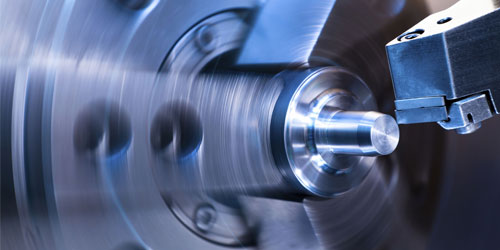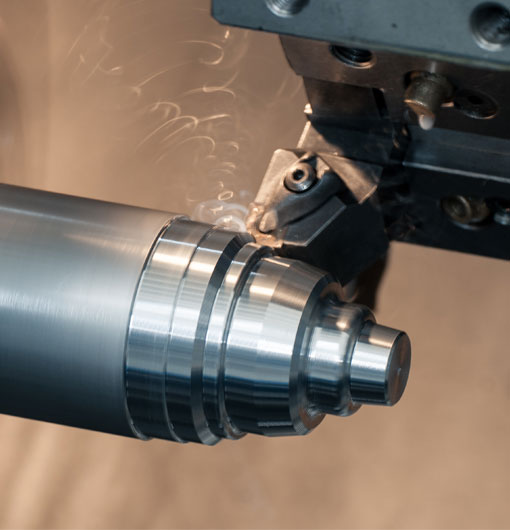Introduction
Canned cycles are a simple and efficient way to automate repetitive CNC machining operations. They can save time and effort by reducing the amount of code needed for complex operations, as well as providing a more consistent approach to machining. In this blog post, we'll explore various canned cycle turning CNC examples, offering practical tips and techniques to elevate your CNC machining skills.
What are Canned Cycles?
Canned cycles are pre-programmed routines within a CNC machine's control system designed to automate specific machining processes. These standardized routines simplify programming and can help to improve machining efficiency and consistency. Some common examples include drilling, boring, tapping, and turning operations.
Types of Canned Cycles for Turning CNC
For turning CNC, there are several canned cycles for different operations, which usually include:
1. Rough Turning Cycle (G71): This cycle is used for roughing operations, removing material from the workpiece to a specified depth in multiple passes.
2. Finish Turning Cycle (G70): Once the roughing process is complete, the G70 cycle is used to finish the workpiece by cutting to its final shape.
3. Groove Cutting Cycle (G74 & G75): These two cycles cater to grooving operations in both the X and Z-axis, respectively.
4. Threading Cycle (G76): This cycle is responsible for creating internal or external threads on a workpiece.
5. Boring Cycle (G85): G85 is a canned cycle designed to automate the boring process, producing precise holes in workpieces.
Canned Cycle Turning CNC Examples
Let's now dive into some practical examples of canned cycles for CNC turning operations:
Example 1: Rough Turning and Finish Turning
Here's a simple example that demonstrates the use of G71 and G70 for rough and finish turning:
O0001 (Program number)T0101 (Select tool 1 and offset 1)G97 S500 M3 (Spindle speed 500 RPM in a clockwise direction)G00 X30 Z2 (Initial positioning - rapid traverse to X30 and Z2)G71 P10 Q20 U2 W0.1 F0.2 (Rough turning cycle parameters)G70 P10 Q20 (Finish turning cycle parameters)M30 (End of program)%N10 G00 X40 Z0.5 (Rough cutting profile starting point)N20 G01 X32 Z-1.0 (Cutting movement)N30 X24 Z-3.0N40 X20 Z-5.0N50 X12 Z-7.0N60 G00 X40 (Return to the starting point)N70 G01 Z-8.0 (Final shape cutting)
Example 2: Groove Cutting
An example using G74 and G75 for grooving operations:
O0002 (Program number)T0201 (Select tool 2 and offset 1)G97 S500 M3 (Spindle speed 500 RPM in a clockwise direction)G00 X25 Z0 (Initial positioning)G74 X20 Z-5.0 P3000 Q1200 F0.2 (Groove cutting cycle parameters in the Z-axis)G00 X50 Z50 (Move the tool away from the workpiece)M30 (End of program)%
Example 3: Threading
Below is a simple example for the G76 threading cycle:
O0003 (Program number)T0301 (Select tool 3 and offset 1)G97 S1000 M3 (Spindle speed 1000 RPM in clockwise direction)G00 X50 Z2 (Initial positioning)G76 Z-20 P1000 Q500 F2 (Threading cycle parameters - pitch, depth, and feed rate)G00 X50 Z50 (Move the tool away from the workpiece)M30 (End of program)%
Tips and Best Practices
To make the most of canned cycles in CNC turning operations, consider these best practices:
1. Optimize tool path: Design the tool path to minimize non-cutting movements, which can help reduce machining time.
2. Choose the right cutting speed and feed rate: Consider the material, tooling, and machine capabilities for optimal cutting parameters.
3. Familiarize yourself with G-code: Although canned cycles simplify programming, it's essential to understand G-code for better control and customization of your machining processes.
4. Test your program: Always run a simulation or dry run to verify the tool path, parameters, and accuracy of your canned cycle program.
5. Ensure proper cutting conditions: Ensure that your workpiece is properly fixtured, and maintain sufficient coolant flow during the machining process.
By understanding these canned cycle turning CNC examples and following best practices, you can enhance your CNC turning operations, reduce errors, and increase productivity.
canned cycle turning cnc examples













